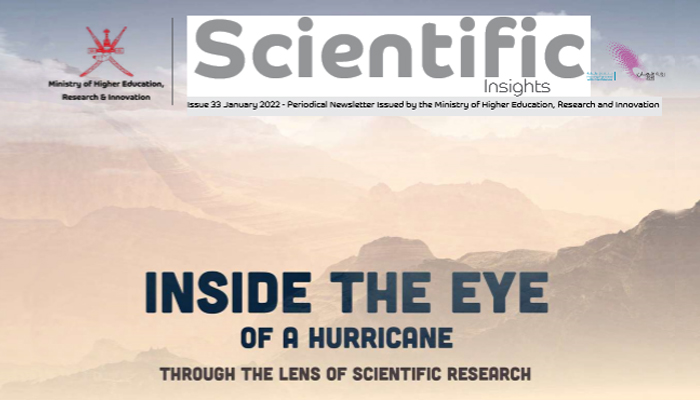
Muscat: A new way to apply advanced artificial intelligence (AI) in cooling buildings using renewable energies has been revealed by an Omnai researcher in the 33rd issue of Scientific Insights magazine published by the Ministry of Higher Education, Research and Innovation.
The research study led by Dr Maryam Zuhair Al Lawati, from the Ministry of Higher Education, Research and Innovation, discovered a new and innovative way to apply advanced AI techniques and adapt them in cooling buildings in Oman.
These techniques use renewable environmental energies through a smart system that integrates these technologies through a specific mechanism.
The AI-designed system predicts the volume and amount of cooling necessary for the building during summer and winter. Based on the predictions, the control system operates the heat-conditioning system according to the building's needs.
Dr Maryam stated that the idea of the research came about due to the importance of utilising renewable energies existing in Oman. The research also aims to solve the permanent and continuous problem of cooling and air conditioning buildings. The problem always occurs during summer. It can be solved through using modern and advanced AI techniques to find a way that helps reduce costs in a sustainable and environmentally friendly way.
Furthermore, Dr Maryam added that the research included the use of several tools, such as: data analysis for different weather conditions in Oman (they are realistic challenges, especially due to the weather in the summer) and data of the buildings, including: the materials used in buildings and how they differ from the buildings in European countries.
Dr Maryam chose solar energy as a type of renewable energy to cool buildings. This energy operates the thermal air conditioner, which provides energy to cool the building (The study sample is the Social Centre building in Innovation Park Muscat). The heat is reduced through transferring the energy to the earth and utilising the land and geothermal energy. This type of optimal energy use is an innovative method, and the AI and control system has been programmed to determine the working hours that are very suitable for this system.
Dr Maryam said that the research study applied AI to predict the operation of the cooling system by calculating the amount of cooling needed in the building. As it is known, the amount of cooling in Oman differs from other countries, where the cooling load increases in summer, especially in June, July and August. However, during these months and due to the exceptional climatic situation of the Khareef (monsoon) season in Dhofar, it affects the solar energy. The way to calculate this cooling load in the current world-wide AI system has several difficulties.
Therefore, through this research, Dr Maryam and her team devised a new method of using AI to calculate cooling loads to suit the relevant system.
Dr Maryam explained that the findings of the study showed that Oman entirely relies on electrical energy to cool buildings by 100 per cent. Fortunately, the study proved that the use of electrical energy may be reduced from 100 per cent per year to 23.6 per cent (which is a big difference), when thermal energy based on solar power is introduced. The difference could be more remarkable, as the findings showed that the AI system can predict the amount of cooling for this hybrid system, with a high predictive accuracy of 98 per cent.
The findings of this study have paved the way for other projects and alternative solutions for hybrid system in the future to continue implementation, as the cooling system in Oman currently has some difficulties, especially due to the complete dependence on electric air conditioners and because the smart system is reasonably modern in Oman. The research study also proved that the role of geothermal energy is small compared to the percentage of solar energy use. Solar energy must therefore be used efficiently in this area.
Scientific Insights is a scientific journal published every three months by the Ministry of Higher Education, Research and Innovation in both Arabic and English. To read more interesting articles in the fields of science and innovation, interested readers can access the magazine online through the ministry’s official social media channels.